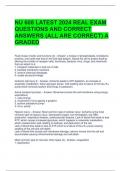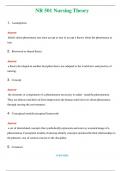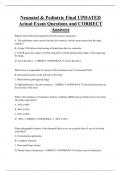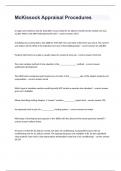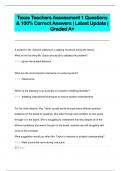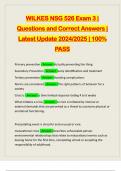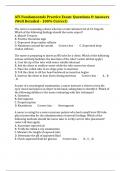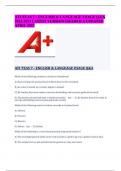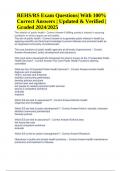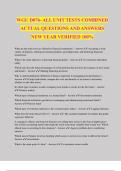Exam (elaborations)
NU 608 LATEST 2024 REAL EXAM QUESTIONS AND CORRECT ANSWERS (ALL ARE CORRECT) A GRADED
- Course
- Institution
NU 608 LATEST 2024 REAL EXAM QUESTIONS AND CORRECT ANSWERS (ALL ARE CORRECT) A GRADED Fluid mosaic model: and functions (4) - Answer- a mosiac of phospholipids, cholesterol, proteins, and carbs that float in the fluid lipid bylayer. Allows the cell to protect itself by altering the number of rec...
[Show more]
